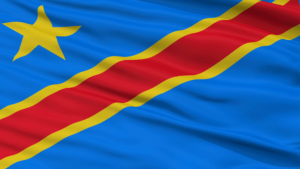Our Mission
Our mission is to understand the social implications of Congolese immigration in Kirksville. The contemporary state of the Kirksville economy has attracted over six-hundred Congolese immigrants into the community. Jobs provided by Kraft-Heinz serve as a large incentive for adult immigrants and provide a stable living for families. What we are specifically interested in is looking at is the effect of this phenomenon on the younger generation of immigrants. How do their social integration, education, and community orientation affect their educational/economic opportunities and success? Is there a need for Kirksville institutions to adopt different policies and procedures to help these immigrants and their children successfully integrate into Kirksville?

Data Collection
To learn more about these topics, we met with Amy Brazier, an English Language Learning (ELL) instructor and class coordinator for the Kirksville Public School District, as well as Ashley Young, Kirksville’s Assistant City Manager.
During our interview with Amy, we were interested in asking her about her experience working with immigrant students, and any patterns she has noticed among these students in regards to their academic success, school involvement, and language progress during her time in this position. She explained that the ELL students are defined as anyone ranging from speaking little to no English to students who are near fluent but are occasionally monitored. This group of students make up roughly six percent of the Kirksville student body, and although this percentage is significantly higher than in previous years, it is not significant enough to where the public schools are obligated to provide a significant number of translators and ELL instructors. The schools are actively working to improve and expand their ELL department, as the number of ELL students continues to increase.
Amy explained that in regards to integration into the school district, the Congolese students face a few barriers that may begin to improve over time. Based on what Amy has seen, many of these students do not take part in after school activities due to transportation issues. Some immigrant students are beginning to join various sports, however, it has not become widespread yet. In regards to academics, unsurprisingly, the students that come into the school system at an earlier age are often more successful and have an easier time with the upper-level courses in high school. Because the influx of immigrant to Kirksville is a relatively recent occurrence, the ELL department is understaffed, and teachers in the district have yet to be properly trained on working with ELL students. In addition to this, the schools have been slow to implement any before school or afterschool activities to help the integration process for these students.
To get a general assessment of the Congolese involvement and interaction in the Kirksville community, we began by meeting with Ashley Young, the Kirksville Assistant City Manager. Young started the KICC (Kirksville Immigrant Community Coordination) about a year ago to help with the acculturation of the Congolese and other immigrants into the Kirksville community. This group was developed as a response to the influx in African immigration in late 2014 and 2015 and aimed to smooth translation barriers, particularly when it came to daily essentials (such as traffic laws, how to sign up for water, etc.) and basic safety precautions. Young noted that this sudden inpouring of immigrants was due to the high amount of jobs available both at the national and local level. He cited that due to the U.S.’ recent booming economy there are more jobs available than there are those to work them, hence the need for immigration. Therefore, a main component of the KICC is teaching basic safety vocabulary to minimize any risk of injury.
Additionally, Young also discussed how the Kirksville community has been generally welcoming and accepting of the Congolese. Most of the immigrants came here on a diversity visa program. Not only have they shown visible signs of pursuing the American Dream (through buying houses, cars, working, etc.) to benefit themselves, but also the recent expansion of Kirksville’s economy (such as the Kraft-Heinz expansion) illustrates how essential and beneficial their integration has become. With around 700-800 new residents, the corresponding economic impact of these individuals on a relatively small community like Kirksville is unquestionable. As for their chances of upward mobility, it is difficult to gauge due to its recency but will be more apparent once the 2020 census comes out. Regardless, Young agreed that it seems as if the chances for upward mobility within this community seems promising due to their heightened language acquisition (as more become English speakers at earlier ages) and economic endeavors.
Secondary Data Collection & Review

Community Population & Statistics
Although the US Census Bureau provides a basic overview of the Congolese population from 2010, we have found in our interviews with Ashley Young and Amy Brazier that a majority of the Congolese immigration has happened since 2010. Since it is difficult to assess the quantitative scope of Congolese integration, we hope to have collected enough first-hand, qualitative information to verify the current socioeconomic status of the Congolese population.
- In 2016, there were approximately 50 families in the community who had been in Kirksville for a year or more.
- Immigrants from the Democratic Republic of the Congo speak at least one of the 200 local languages from their native home, plus French which is the official language of the DRC.
- The diversity immigrant visa is an international visa lottery which encourages immigration from countries whose residents do not typically come to the U.S. The diversity immigrant visa enabled most Congolese to make the move to America.
Integration Support
- Congolese students in Kirksville receive direct help with their language barrier in the form of the English as a Second Language (ESL) and English Language Learning (ELL) programs. According to Amy Brazier, there are currently 122 Congolese students (K-12) across the district now out of 146 ESL students, accounting for 84% of the total ESL population.
- Professor Ronald Manning–The Edwin Carpenter Language Learning Center Director at Truman–organizes several support groups for the Congolese community. Manning has revealed that a woman at the Kirksville Technical Center has been giving English lessons to the Congolese, free of charge, three days a week as a result of a grant.
- Congolese’ general opinion is feeling supported by Kirksville community residents, who tend to be quite nice to these new community members.
Integration Obstacles
- The language barrier seems to be one of the most difficult obstacles that immigrants are faced with in everyday life. Confirming this, Beybe Anderson Vantoto, a Congolese immigrant, continued to tell the Truman Media Network (TMN), “We really want to learn English,” Vantoto says. “If we don’t know the language, we can’t teach our kids. But in certain extreme cases, special cases, like at the bank or with the police, if there are translators, that would help us to do things correctly.”
- There is a lack of French translators or French-translated text within the accessible public spaces of Kirksville. As students of Structured Inequalities, we realize how this language barrier can have a snowball effect on the opportunities afforded to these Congolese immigrants in Kirksville. Lacking the proper resources to help this community learn English, automatically puts them behind the native population in Kirksville in terms of educational success, and other social and economic opportunities that may determine a successful future.
- Two of the individuals interviewed by the TMN from the DRC, hold advanced degrees in physics and industrial engineering. Due to their inability to perfect their English, they haven’t yet been able to find work in their field of studies. Their knowledge and expertise is far underutilized, thus underpaid, as they both currently work at the Farmland Foods factory in Milan, MO
Structured Inequalities Literature Support
In “The Colors of Poverty: Why Racial and Ethnic Disparities Persist”, written by Ann Chih Lin and David R. Harris, the authors address racial inequality in the United States and how we need a new approach to finding solutions. They state that education is always considered the solution to inequality, and that home life can often prevent students from being able to focus and dedicate themselves to their academics in the same way that well-supported students can. They give the example of Jamal, a black student who has a rough home life and has a hard time in school. They argue that even though he receives extra attention at school, it does not actually help his home life situation in any way. They also argue that oftentimes receiving extra attention at school can reinforce the idea that a student is a troublemaker to them and their peers.
This applies to our project in that many of the Congolese students in the school district are enrolled in ELL classes outside of their other classes, separating them from all of the other, English-speaking students. As Amy Brazier stated in our interview, oftentimes these students want to disassociate themselves from this program as soon as they can in order for them to be just “normal” students. In addition to this, Amy explained that many immigrant students hesitate to join after-school activities because most of their parents are working at that time and it would cause transportation complications. This sets these students behind in that they do not have have the same opportunities for socialization as other students.
In the book article, “The Colors of Poverty: Can Social Capital Explain Persistent Racial Poverty Gaps?”, Quillian and Redd explain different interpretations of what social capital is and how it is applied throughout the United States. Social capital represents resources embedded in social relations rather than individuals among racial and ethnic groups. Since segregation of ethnic minorities are disadvantaged than some groups, they probably have a different social culture than the mainstream culture. Ethnic minorities and immigrants tend to have difficulty with employment and adjusting to mainstream culture. Minority groups and immigrants also often lack resources for employment, housing, education, and language barriers. According to the statistics in the book article, immigrants in the United States are socioeconomically disadvantaged. The poverty rate is about 18%, whereas the rate is about 13% among natives. The common culture, history, language, and outlook are new to immigrants, which makes it a lot harder to adapt to different cultural and social capital.
Amy Brazier mentions in her interview that Congolese students face barriers as the students integrate into the school district, and the barriers improve over time. Based on what Brazier has accounted for, not all students are apart of after-school activities. Brazier also relates social capital barriers to the problems with language and transportation. Ashley Young further supports the influx and demand for jobs, and so job availability attracted immigrants in Kirksville.
George Farkas’ chapter “How Educational Inequality Develops” focuses on how academic achievement is an important determinant of socioeconomic success. He begins by noting that those with advanced degrees earn much more than their educated peers on average and how this inhibits minorities (like African American and Latinos). Farkas explores the roots of educational inequalities, detailing that these disparities typically begin in preschool and early elementary school and continue well throughout high school. He finds that these gaps are highly related to race and socioeconomic status, which in turn influence the amount of available resources that both parents and children have at their disposal. Lower socioeconomic classes and minorities tend to have less resources (in the case of immigrants, the major disadvantage is the high probability that their parents are non-English speaking), making it more difficult to test into advanced groups in school. This early-on testing and assortment only widens the education inequality gap as children move throughout the school system, making it more difficult for these disadvantaged students to catch up to peers placed in “advanced” groups. Farkas concludes by noting that policies have been ineffective in raising elementary school performance of disadvantaged students.
Farkas’ work demonstrates the importance of knowing how the Congolese are incorporated into the local school system. It particularly emphasizes how crucial it is that ELL teachers such as Amy Brazier are supported and funded in order to increase the resources available to the Congolese.
Concluding Thoughts and Future Research
From interviews with Ashley Young and Amy Brazier we found that, in general, these immigrants have been welcomed into the Kirksville community; however, the community was not and still continues to be unprepared for the conflicts that arise. That being said, the KICC as well as numerous public officials have acknowledged these issues and are actively working to better the town for both the native and immigrant communities. The findings in the literature review and secondary data collection, as well as these interviews, could potentially lead to research in the future. Ideally, more time could be spent gathering information from members of the Congolese community themselves. Perhaps work could be done to provide a program for more French-speaking community members to coordinate with the school systems in order to have as many opportunities as possible for Congolese students to integrate smoothly and efficiently.

Sources
“About Us.” Moment in Migration, xroads.coplacdigital.org/truman/about-us/.
Data Access and Dissemination Systems (DADS). American FactFinder – Results, 5 Oct. 2010, factfinder.census.gov/faces/nav/jsf/pages/index.xhtml.
Farkas, George. “How Educational Inequality Develops.” Colors of Poverty, The: Why Racial and Ethnic Disparities Persist, edited by Ann Chih Lin and David R. Harris, Russell Sage Foundation, 2008, pp. 105–134. JSTOR, www.jstor.org/stable/10.7758/9781610447249.9.
Lin, Ann Chih., and David R. Harris. The Colors of Poverty: Why Racial and Ethnic Disparities Persist. Russell Sage Foundation, 2010.
“Local Congolese Community Shares Experiences.” Truman Media Network, 30 Aug. 2017, tmn.truman.edu/blog/news/city/local-congolese-community-shares-experiences/.
Quillian, Lincoln and Redd, Rozlyn. “The Colors of Poverty: Can Social Capital Explain Persistent Racial Poverty Gaps?” Russell Sage Foundation, 2010, pp. 170-190.
Weininger, Elliot B., and Annette Lareau. “Cultural Capital.” The Blackwell Encyclopedia of Sociology, 2007, doi:10.1002/9781405165518.wbeosc169.
